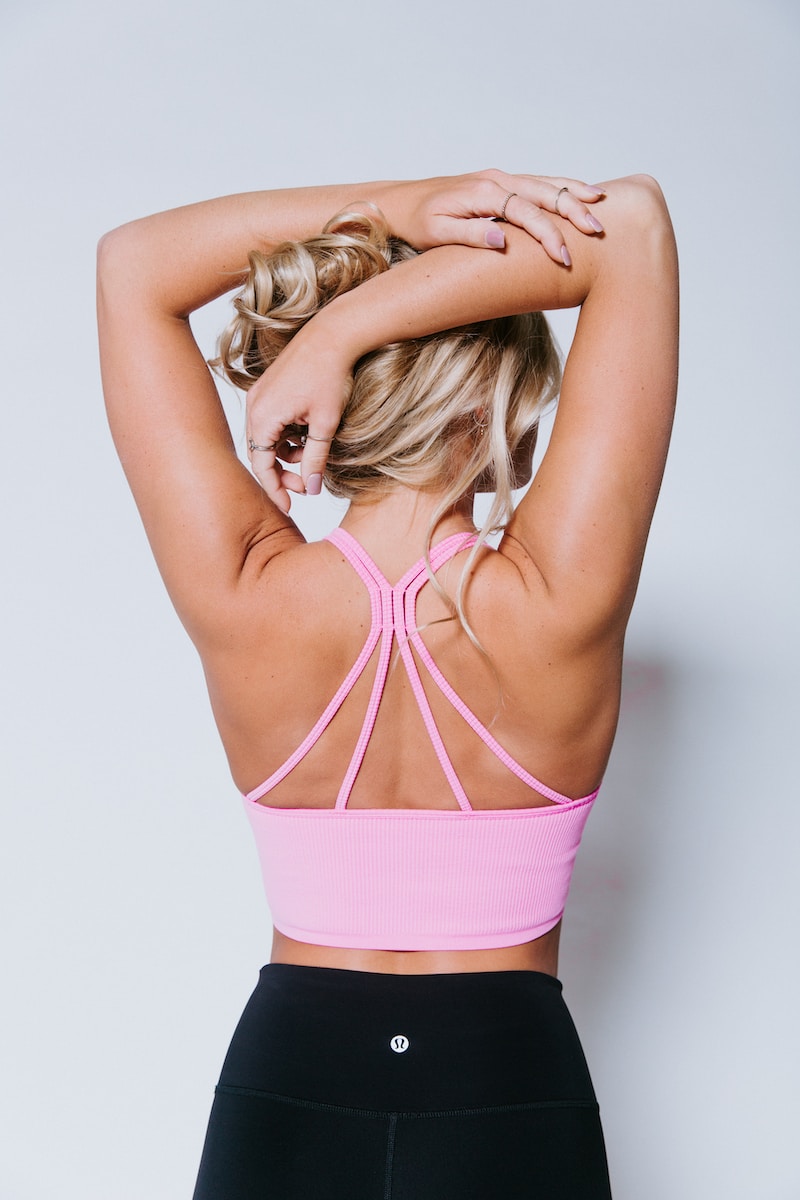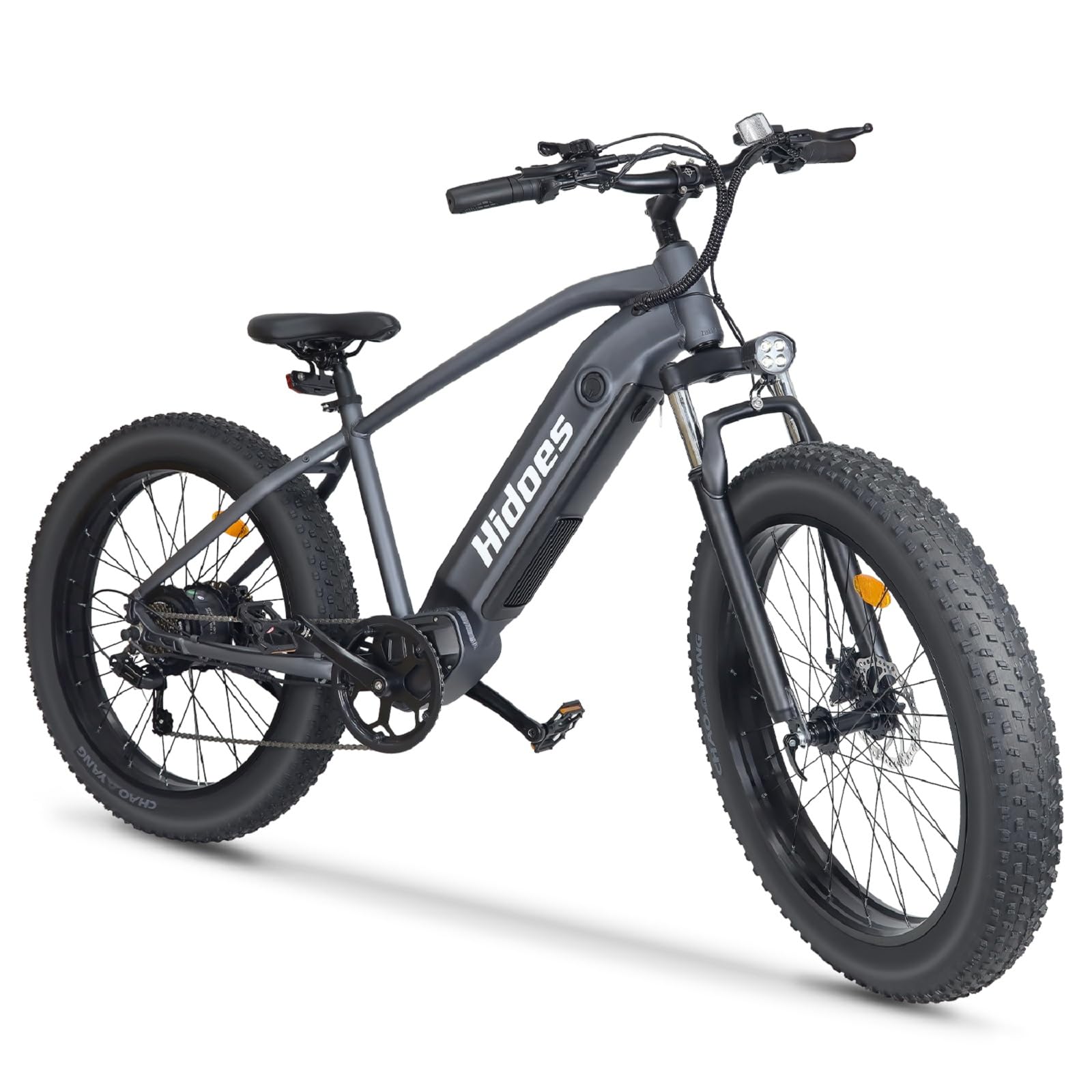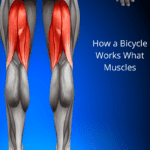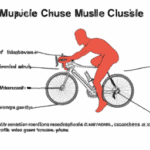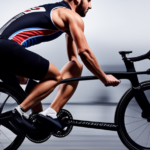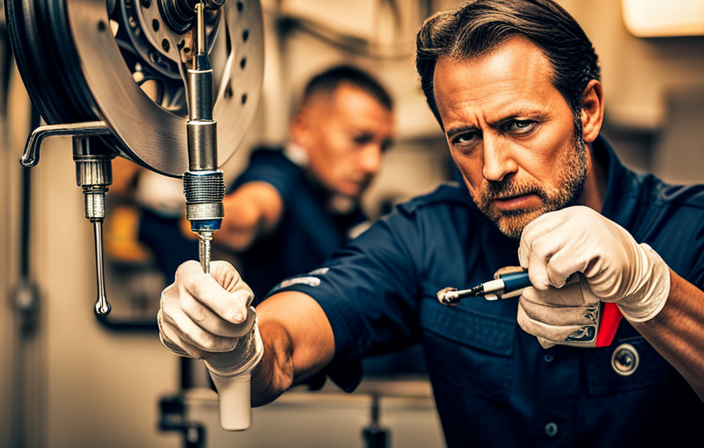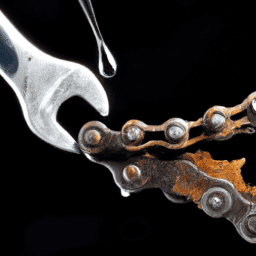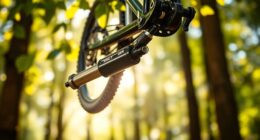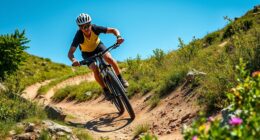As a cycling enthusiast, I have always been curious about which muscles are used when cycling. Cycling is a low-impact exercise that is enjoyable and great for your health and fitness. It helps to strengthen muscles, improve heart health, and burn calories. In this article, I will discuss the primary muscles used during cycling, other muscles that are involved, the advantages of cycling for muscle growth, and recommendations for targeting specific muscle groups.
Cycling is a full-body workout that targets several major muscle groups, including the quadriceps, hamstrings, glutes, calves, and core muscles. These muscles work together to generate power and propel the bike forward.
The quadriceps, located at the front of the thigh, are the primary muscle group used during cycling. They are responsible for extending the knee and driving the pedal down. The hamstrings, located at the back of the thigh, work in conjunction with the quadriceps to generate power during the pedal stroke.
The glutes, located in the buttocks, are also heavily engaged during cycling, especially during uphill climbs. The calves, located at the back of the lower leg, help to stabilize the ankle and provide the necessary force to push the pedal down. Finally, the core muscles, including the abdominals and lower back muscles, provide stability and balance during the ride.
Key Takeaways
- Cycling targets major muscle groups including quadriceps, hamstrings, glutes, calves, and core muscles.
- Choosing the appropriate type of bike can help target specific muscle groups during workout, with road cycling emphasizing leg muscles and mountain biking working on core and upper body muscles.
- Cycling improves core stability, posture, and reduces injury risk, while also building and toning muscles due to resistance training.
- Slow progress is key to injury prevention, and it’s important to listen to your body and not push beyond limits.
The Main Muscles Targeted During Cycling
When you hop on a bike and start pedaling, you’ll feel your quadriceps, hamstrings, glutes, and calves working hard to power you forward. These are the main muscles targeted during cycling.
The quadriceps, located in the front of your thighs, are responsible for extending your knees and generating power to push the pedals down. The hamstrings, located in the back of your thighs, work in opposition to the quadriceps, allowing you to pull the pedal up. Your glutes, or buttocks, provide additional power and stability, while your calves help to give your foot the final push at the bottom of the pedal stroke.
Muscle fatigue and proper form are two key components of maximizing muscle engagement during cycling. If your form is poor, you may not be engaging these muscles effectively, leading to muscle fatigue and a less efficient ride. Proper form involves keeping your knees in line with your feet, maintaining a steady cadence, and engaging your core muscles to stabilize your body. By doing so, you’ll be able to engage these main muscle groups more effectively and minimize the risk of muscle fatigue.
Other muscles engaged during cycling include the hip flexors, abs, and back muscles, which we’ll explore in the next section.
Other Muscles Engaged During Cycling
As a cycling enthusiast, I’m always interested in learning more about the muscles engaged during my rides. While the main muscles targeted during cycling are the quadriceps, hamstrings, and glutes, there are also other important muscles that come into play.
Specifically, the core, back, and arms all play a vital role in supporting the body and maintaining proper form while cycling. By understanding how these muscles work together during cycling, we can better optimize our workouts and improve our overall performance.
Core
The core muscles are crucial in maintaining balance and stability while cycling, making them an essential component of any cyclist’s workout routine. Core strengthening exercises, such as planks, crunches, and Russian twists, can help improve core stability. This, in turn, can lead to better posture and reduced risk of injury.
A strong core also allows for more efficient transfer of power from the legs to the pedals. This results in a smoother and more powerful pedal stroke. Moreover, a strong core can improve mental focus and concentration while cycling. By maintaining a stable and balanced position on the bike, cyclists can better focus on their surroundings and react quickly to any changes in terrain or traffic.
Incorporating core strengthening exercises into a regular cycling workout routine can lead to improved performance and overall enjoyment of the sport. Moving on to the next subtopic, the back muscles also play a crucial role in cycling.
Back
One of the key components to a strong and efficient cycling form is maintaining a healthy and strong back. The back muscles play a crucial role in maintaining the posture and stability while cycling. The muscles in the back that are mainly used while cycling are the trapezius, rhomboids, and latissimus dorsi. These muscles help in stabilizing the upper body and keeping the shoulders steady.
A strong back is essential for cyclists as it reduces the risk of lower back pain, which is a common problem faced by many cyclists. To strengthen the back muscles, one can perform exercises such as pull-ups, rows, and lat pull-downs. These exercises target the muscles in the back and help in building strength. Stretching techniques such as the seated spinal twist and the cat-cow stretch can help in increasing the flexibility of the back muscles.
Incorporating these strengthening exercises and stretching techniques in one’s workout routine can help in achieving a healthy and strong back, which is crucial for efficient cycling form. A strong back is just one part of the equation for a great cycling form. The next vital aspect to focus on is the arms.
Arms
Get ready to feel the burn in your biceps and triceps as you pump your arms to power up those pedals, making your ride feel as smooth as butter. Cycling is not just a leg workout, but also an arm workout due to the upper body engagement required to keep your balance and maintain control of the bike.
Here are some ways cycling works your arms:
-
Grip: Holding onto the handlebars requires grip strength, which engages the muscles in your forearms.
-
Pulling: When you pull up on the handlebars to lift the front of the bike, you engage your biceps.
-
Pushing: Pushing down on the handlebars to maintain control of the bike engages your triceps.
-
Balancing: Balancing your upper body while cycling engages the muscles in your shoulders and upper back.
It’s not just your legs that get a workout during a bicycle ride; your arms also get a good workout. The engagement of your upper body muscles while cycling can lead to improved posture, which can have numerous benefits for your overall health.
Benefits of Cycling for Muscle Development
You’ll strengthen your muscles by cycling regularly, thanks to the resistance training that comes with pedaling against the bike’s gears. Cycling is an excellent form of exercise that can help you build and tone your muscles.
However, muscle development is not just about exercise, nutrition also plays a critical role. You need to ensure you get enough of the right nutrients in your diet to support muscle growth and recovery.
Cycling for weight loss is an excellent way to tone your muscles while shedding unwanted pounds. As you cycle, you burn calories, which helps you lose weight and reduce fat. The more you cycle, the more calories you burn, and the more your muscles work, leading to increased muscle development.
In the next section, I’ll share tips on how to target specific muscle groups while cycling.
Tips for Targeting Specific Muscle Groups
Now that we know the benefits of cycling for muscle development, let’s dive into some tips for targeting specific muscle groups. It’s important to note that in addition to cycling, incorporating resistance training and stretching can help improve muscle strength and flexibility. Resistance training can be done using weights or bodyweight exercises, while stretching can help prevent injury and increase range of motion.
Another useful tool for targeting specific muscle groups is using technology for muscle tracking. There are various apps and wearable devices that can track your cycling workouts and provide feedback on your muscle engagement. This can help you focus on specific muscle groups during your rides and ensure that you are getting the most out of your workouts. By incorporating these tips, you can optimize your cycling workouts for maximum muscle development and overall fitness.
With these tips in mind, let’s move on to incorporating cycling into your fitness routine.
Incorporating Cycling into Your Fitness Routine
When incorporating cycling into my fitness routine, there are a few key things I need to keep in mind. First, I need to choose the right bike for my needs, whether that’s a road bike, mountain bike, or stationary bike.
Second, I should start slowly and gradually build up my endurance to avoid injury and burnout.
Finally, joining a group or class can provide motivation and accountability to stick with my cycling routine. By following these tips, I can make cycling a sustainable and effective part of my fitness regimen.
Choosing the Right Bike
Selecting the appropriate bicycle for your body type can enhance your riding experience and optimize the muscle groups targeted during your workout. There are various types of bikes available in the market, each designed for a specific purpose. For instance, road bikes are ideal for long-distance rides, while mountain bikes are suitable for off-road terrains. It is essential to find the right fit for your body to prevent discomfort and injury.
To help you choose the right bike, here is a table that compares the features of different types of bicycles:
| Type of Bike | Terrain | Features |
|---|---|---|
| Road Bike | Smooth roads and paved trails | Lightweight, skinny tires, drop handlebars |
| Mountain Bike | Off-road trails, rocky terrains | Wide tires, suspension system, flat handlebars |
| Hybrid Bike | Multi-purpose, combination of road and mountain bike | Comfortable saddle, upright handlebars, medium-sized tires |
By selecting the appropriate bike, you can target specific muscle groups during your workout. For instance, road cycling emphasizes the leg muscles, including the quadriceps, hamstrings, and glutes, while mountain biking works on the core and upper body muscles, including the chest, back, and arms. Remember to start slowly and build your endurance gradually to prevent injury and enjoy your cycling experience.
Starting Slowly and Building Endurance
To truly enjoy your cycling experience and avoid injury, it’s important to take it slow and gradually build up your endurance. Slow progress is key to injury prevention, as pushing yourself too hard too soon can lead to muscle strains, joint pain, and other injuries.
When starting out, it’s important to listen to your body and not push yourself beyond your limits. In addition to physical endurance, mental stamina is also important for cycling. Motivation techniques such as setting goals, tracking progress, and visualizing success can help you stay motivated and push through tough rides.
Remember that building endurance takes time and dedication, but the rewards of improved fitness and the joy of cycling make it all worth it. In the next section, we’ll explore the benefits of joining a group or class for added motivation and support.
Joining a Group or Class for Motivation
Joining a group or class can be a great way for you to stay motivated and get the support you need to keep pushing yourself on your cycling journey. It’s common for individuals to struggle with staying accountable to themselves, but having others to ride with can help keep you on track.
Whether you’re looking for a social group to ride with or a class with a structured workout, there are plenty of options available to you. Finding accountability partners can be especially helpful when trying to maintain a consistent workout routine.
When you ride with a group, you’re all working towards a common goal, which can provide an added sense of motivation and encouragement. In addition to the support you receive from your fellow cyclists, joining a group can also help you learn proper group workout etiquette and improve your cycling skills.
You’ll have the opportunity to learn from more experienced riders and gain valuable feedback on your technique, which can ultimately lead to a more enjoyable and successful cycling experience.
Frequently Asked Questions
How many calories can you burn during a cycling workout?
During a high intensity cycling workout, I can burn up to 600 calories per hour. Cycling in nature not only burns calories, but also provides mental and emotional benefits. It’s a great way to improve cardiovascular health and reduce stress.
Can cycling help with weight loss?
Cycling is a great form of exercise for weight loss. An increase in cycling intensity can lead to greater calorie burn. Both outdoor and indoor cycling can provide a challenging workout to aid in weight loss.
What are some common injuries associated with cycling?
As a cyclist, I am aware of the common injuries associated with this sport. To prevent injuries, I incorporate recovery exercises into my routine. Stretching and strength training are essential for maintaining a healthy body and preventing injuries.
How does cycling compare to other forms of cardio for muscle development?
Compared to other forms of cardio, cycling provides excellent cardiovascular benefits and improves muscle endurance. Consistent cycling can lead to increased strength in the legs, core, and upper body.
Is it necessary to use special cycling shoes or pedals to target specific leg muscles?
To target specific leg muscles during cycling, it’s not necessary to use special cycling shoes or pedals. However, certain pedal types like clipless pedals can improve leg muscle activation due to improved biomechanics.
Conclusion
In conclusion, cycling is an effective way to target various muscle groups in the body. While the main muscles targeted during cycling are the quadriceps, hamstrings, and glutes, other muscles such as the calves, core, and upper body also get engaged. Cycling consistently can lead to muscle development, improved endurance, and overall fitness.
As I pedal my bike, I’m reminded of the power and strength of my body. Each revolution of the pedals symbolizes the hard work and dedication it takes to achieve my fitness goals. With the wind in my hair and the sun on my face, I’m filled with a sense of accomplishment as I push myself to new limits. Cycling may be challenging, but the rewards are worth it.
So, let’s hop on our bikes and discover the amazing benefits of cycling for our bodies and minds.
